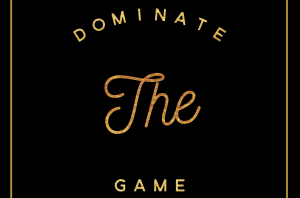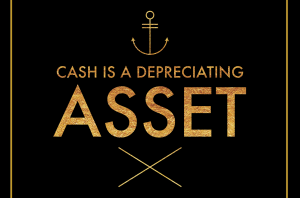
Influencer marketing is now at an all time high, a quick Google Trends search shows an extremely high volume the search volume, so much so that a lot of companies (who’ve already taken the plunge and embraced it) are starting to realize this one important fact: “This shit doesn’t work!”
Influencer Marketing is based on the idea that you can borrow or rent or “leverage”(are we still using that word?) someone’s version of what’s trending or “cool” for a price.
For starters:
1) There’s No Guarantee Of Any ROI
In WWD magazine, Jennifer Powell, head of Next Model Management’s influencer division mentioned how “at this stage of the game, the campaigns are mostly successful.” So that means there are brands out there who’ve spent a ton of money on so-called influencers that are not actually very influential.
What does it take to be an influencer? A lot of followers? A lot of “likes”/engagement on content? Everyone knows that a “like” and a dollar aren’t the same, so how do you even quantify an influencers value?
The truth is that you cannot put a numerical value on anyone in the internet age, unless they have been proven to create those sought after conversions, even without being paid, but I’ll get into that a little later…
A lot of marketers have had to come to terms with the fact that 1 million followers is not going to result in 1 million impressions. It’s about your chosen spokesperson’s influence and whether they can drive engagement.
2) Digital Influencers are Becoming Really Expensive
When they were relatively wet behind the ears and unknown, most “Digital Influencers” were more than happy to negotiate payment in a way that suited the campaign and the scope of the work that they were doing, but…
One day Honda decided to pay an influencer $10,000 to test-drive a car and a cosmetics brand chose to lock their influencers in six-figure contracts, so standard practices began to change and now influencers and those who represent them are less likely to negotiate down.
One influencer wrote in to Who Pays Influencers and mentioned how Starbucks, which was represented by the marketing agency “Swift” paid them a total of $3,300 or $1,100 for each of the 3 animated GIFs that they had commissioned for their Frappuccino sub-brand. The project was completed and paid for within 30 days.
Said influencer went on to state how the project went well, however they wished that they had requested even more compensation. How much compensation, they didn’t say.
3) Even the Pros Don’t Know What They’re Doing
Remember what I said before about an influencer having a proven track record?
Being able to create conversions without any sort of compensation, or for instance, taking a snapchat video of a product only for said product to sell out within that week? That’s someone you can bargain with! The vast majority of influencers on the market right now do not have that kind of influence over their followers.
James Nord, co founder of blogger directory Fohr Card, says “You have to look at those growth and engagement numbers in relation to influencers of similar size. Engagement rates vary greatly as follower count changes and there is no one-size-fits-all when it comes to ‘good numbers.”
Then what are the “good numbers”?
How do people determine them when they’re veting this as a potential marketing strategy?
Most internet personalities are great for a laugh and to entertain their followers, but a vast majority of them do not have any sort of say in how people choose to spend their money — and that’s why Influencer Marketing seems like snake oil to me.
Speaking of followers, many of them don’t respond positively to sponsored content governing the majority of the followers feed, so some influencers resort to hiding sponsored content either by outright lying or by omission of essential information.
The FTC has caught on to those shenanigans and they’re not having it!
4) Many Digital Influencers Have Been Breaking The Law
According to Bloomberg, the FTC is cracking down on paid posts which are not clear about their intention and marketers are once again at a loss of answers and full of confusion.
Justine Ezarik, also known as iJustine on her various social media outlets says that “It’s definitely is getting confusing, the hardest part is when you only have 140 characters or a few seconds of a snapchat, how do you make the most of it?’’
In the above mentioned article, Bloomberg’s interviewed influencers say that they only do as they’re told by the brands and their legal departments, so they certainly can’t be blamed when things go belly up.
But what if the campaign is done and dusted, and the influencer goes on to live their life as though they’d never worked with any brands before. What if there is a huge public/national issue that becomes part of the social dialogue and one of the influencers you worked with in the past decides to join the conversation?
5) An Influencer’s Opinion Has An Impact on Your Brand
Forbes mentions the oftentimes ignored fact that when you work with a digital influencer, your narrative becomes intertwined with theirs, forevermore. If an influencer you worked with (and paid) spews some racist, sexist, problematic vitriol your brand will take a hit!
This makes me wonder if all of this is really worth the trouble, when even the pros are struggling to determine how to get brands their ROI and some “digital influencers” can’t keep their mouths shut about their idiotic beliefs.
What’s the point in it all when you can take your chances with conventional marketing and not have the FTC breathing down your neck, let alone your customers who’ve had a negative run-in with your paid digital spokesperson?
Maybe things would be better if you could control the narrative, right?
6) Big Brands are Creating Their Own Digital Influencers
Like a Cinderella story, imagine your next door neighbour’s starving artist son plucked from obscurity by a large conglomerate and being paid to create art on their behalf.
Sound far-fetched? Well, the truth is stranger than fiction!
James Nord (from Fohr Card) told Bloomberg that “certain luxury brands, in addition to collaborating with the ‘very best’ influencers, are eager to partner with relatively unknown up and comers.”
Nord believes there’s an “arms race” to discover the latest generation of influencers and convert them to the creed of the almighty dollar, before they cost too much!
Don’t get me wrong, I have nothing against people making ends meet, especially if they are creating art that can be enjoyed by people the world over. I understand that in order to create that art, they need money, but I just don’t believe that people should turn their opinion (and nothing more) into a career. Remember the old (expletive) saying about opinions?
Maybe this is a natural progression.
The person you followed on social media starts to feel that their opinion should be compensated, brands and middle men catch wind of a possible exchange, et voila you have a new thing that the pursuit of profit has ruined.
I don’t mind, because I will not be participating in the influencer economy:
I will not be sold anything, by anyone whose only virtue is their version of “cool” and
I will not “borrow” someone’s cool in order to validate my brand.
Eventually, more people will either follow this same ethos, or many brands will either create their own influencer or find someone cheaper until this whole niche turns on itself and goes into a whole new direction.
By Cody McLain





